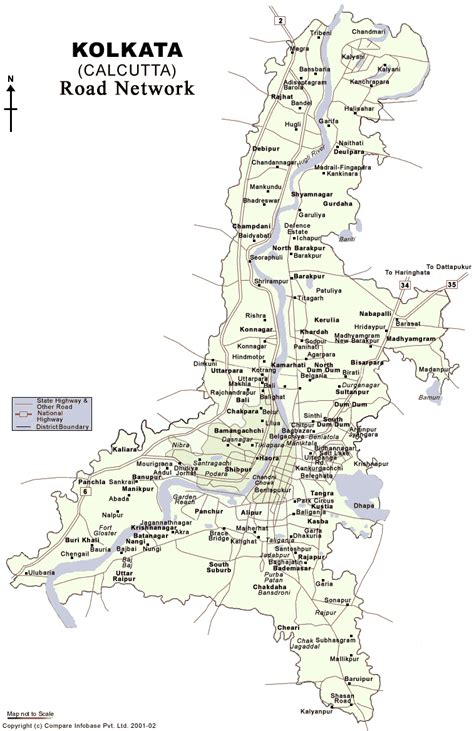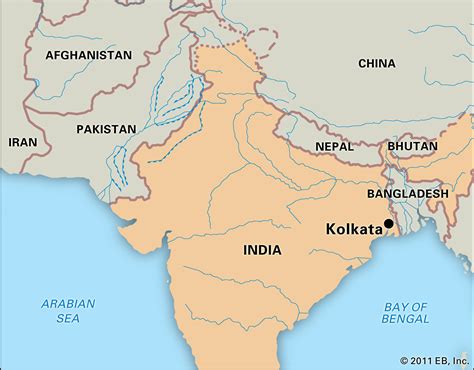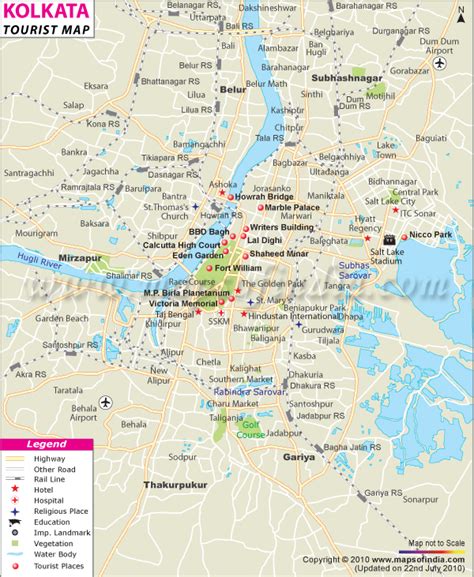Location: Kolkāta 🌎
Location: Kolkāta, India
Administration Region: West Bengal
Population: 18502000
ISO2 Code: West Bengal
ISO3 Code: IND
Location Type: First-level Admin Capital
Latitude: 22.5675
Longitude: 88.37
Kolkata (UK: or , US: , Bengali: [kolˈkata] ; also known as Calcutta which was the official name until 2001) is the capital of the Indian state of West Bengal. It is on the eastern bank of the Hooghly River 80 km (50 mi) west of the border with Bangladesh. It is the primary business, commercial, and financial hub of Eastern India and the main port of communication for North-East India. According to the 2011 Indian census, Kolkata is the seventh-most populous city in India, with a population of 45 lakh (4.5 million) residents within the city. It is a part of Kolkata Metropolitan Area (or known as Greater Kolkata) which has a population of over 1.41 crore (14.1 million) residents making it the third-most populous metropolitan area in India. In 2021, the Kolkata metropolitan area crossed 1.5 crore (15 million) registered voters. The Port of Kolkata is India’s oldest operating port and its sole major riverine port. Kolkata is regarded as the cultural capital of India. Kolkata is the second largest Bengali-speaking city after Dhaka. It has the highest number of nobel laureates among all cities in India.In the late 17th century, the three villages that predated Calcutta were ruled by the Nawab of Bengal under Mughal suzerainty. After the Nawab granted the East India Company a trading licence in 1690, the area was developed by the Company into an increasingly fortified trading post known as Fort William. Nawab Siraj ud-Daulah occupied Calcutta in 1756, and the East India Company retook it the following year. In 1793 the East India Company was strong enough to abolish native rule, and assumed full sovereignty of the region. Under company rule and later under the British Raj, Calcutta served as the capital of British-held territories in India until 1911. In that year, after assessing its geographical location, combined with growing nationalism in Bengal (Calcutta became the centre for the Indian independence movement), the British moved the capital to the relatively more centrally located New Delhi.
Following independence in 1947, Kolkata, which was once the premier centre of Indian commerce, culture, and politics, suffered many decades of political violence and economic stagnation before it rebounded. The city was also flooded with Hindu refugees from East Bengal (present-day Bangladesh) in the decades following the 1947 partition of India, transforming its landscape and shaping its politics. A demographically diverse global city, the culture of Kolkata features idiosyncrasies that include distinctively close-knit neighbourhoods (paras) and freestyle conversations (adda). Kolkata is home to eastern India’s film industry, known as Tollywood, and cultural institutions, such as the Academy of Fine Arts, the Victoria Memorial, the Asiatic Society, the Indian Museum, and the National Library of India. Among scientific institutions, Kolkata hosts the Agri Horticultural Society of India, the Geological Survey of India, the Botanical Survey of India, the Calcutta Mathematical Society, the Indian Science Congress Association, the Zoological Survey of India, the Institution of Engineers, the Anthropological Survey of India and the Indian Public Health Association. Four Nobel laureates and two Nobel Memorial Prize winners are associated with the city. Though home to major cricketing venues and franchises, Kolkata stands out in India for being the country’s centre of association football and also having strong culture in other sports less widespread elsewhere. Hence, Kolkata is also known as ‘the city of joy’.

Top Kolkāta HD Maps, Free Download 🗺️
Map
Maps
United States
United States
World Map
China
China



